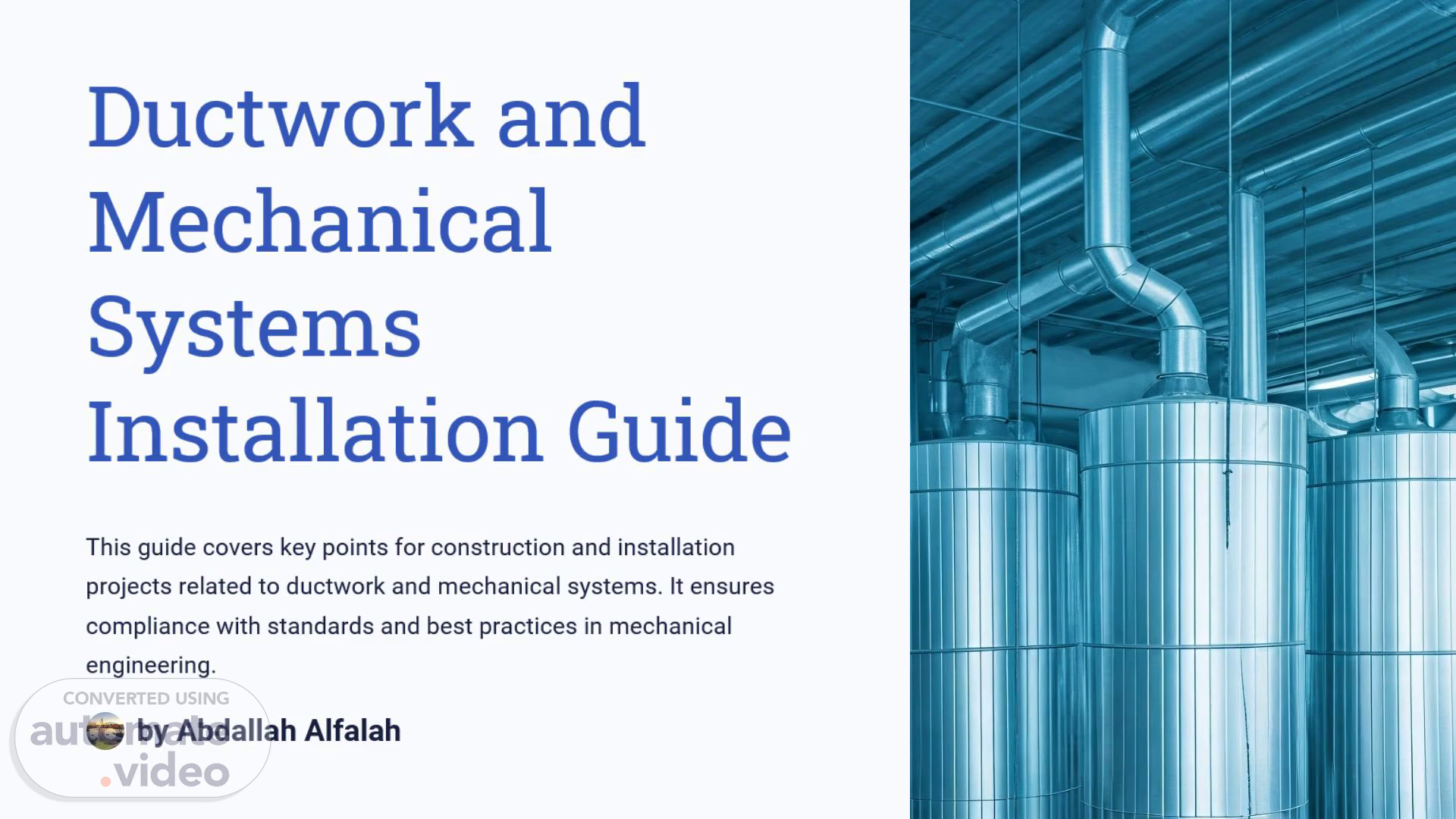Scene 1 (0s)
[Audio] Ductwork and Mechanical Systems Installation Guide This guide covers key points for construction and installation projects related to ductwork and mechanical systems. It ensures compliance with standards and best practices in mechanical engineering. by Abdallah Alfalah.
Scene 2 (19s)
[Audio] Tagging and Labeling Mechanical Systems Ductwork Label all systems according to local codes and industry standards for legal validity and safety. Mark ducts with function, orientation, and size. Use durable, resistant labels. Valves Piping and Equipment Label valves by function for quick identification and safe operation. Mark with corrosion-resistant materials. Include design flow and media information..
Scene 3 (48s)
[Audio] Flexible Duct Requirements Length and Bends Maximum length: 1500mm. Total bends should not exceed 90°. Support Stainless steel draw band support every 600mm. Extra supports at volume dampers and branches. Installation Install flex ducts and diffuser adaptors as per IFC DWG. Coordinate with false ceiling layout..
Scene 4 (1m 18s)
[Audio] Insulation and Security Chilled Water Pipes Duct Sleeves and Flashing Flexible Ducts Insulate all cold water pipes to minimize heat loss. Use stainless steel or aluminum bands to secure insulation. Provide where necessary. Cover all fire sprinkler nozzles. Ensure sufficient clearance to prevent compression. Use proper securing methods..
Scene 5 (1m 43s)
[Audio] Support and Hanging Alignment Regularly check duct support alignment to prevent pressure and noise issues. Threaded Rod Design rod length reasonably to ensure even force distribution. Hanging Points Avoid hanging from adjacent pipes or conduits. Support horizontal ducts near elbows and branches..
Scene 6 (2m 4s)
[Audio] Maintenance and Accessibility Identification Tag and label all ductwork, valves, piping, and equipment for easy identification. Valve Access Ensure valves are easily accessible through service openings. Check operability regularly. Moisture Prevention Take measures to prevent moisture leakage around valves, especially above air ducts..
Scene 7 (2m 30s)
[Audio] Penetration Sealing Proper Sealing Seal pipes and ducts passing through walls and floors to prevent leakage. Flashing Use steel (GI) flashing at duct penetrations to reduce corrosion and moisture. Sleeves Equip all penetrations with appropriate sleeves to protect pipes and facilitate maintenance..
Scene 8 (2m 50s)
[Audio] Service Clearance and Coordination Pipe and Duct Clearance Leave sufficient gaps between services to avoid interference MEP Coordination Ensure different works don't affect each other's functionality Material Storage Store duct materials in dry, ventilated areas away from sunlight Safe Handling Follow safe procedures when moving duct materials on site.
